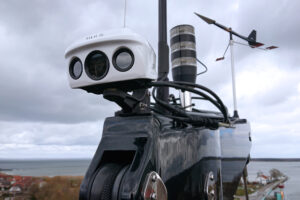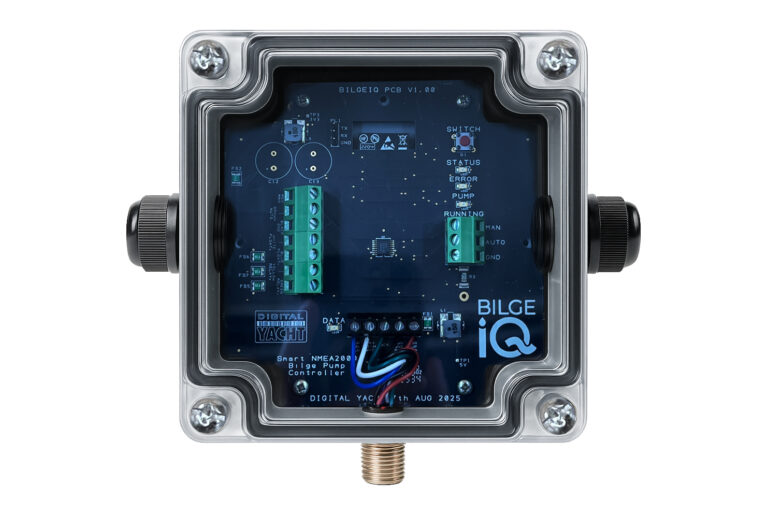
Propane July
Most modern cruising boats are equipped with propane as their primary cooking fuel, and northern sailors often use it for heating as well. It’s perhaps one of the best fuels for these purposes, as it’s readily available and burns cleanly. Despite its convenience, however, propane does carry some hazards, and although not very common, propane explosions and fires can be devastating on a boat.
Considering the danger if a fault were to develop, I’m often struck by how little effort sailors seemingly put into maintaining their propane systems. The problem isn’t lack of concern on the part of boat owners; rather, it’s a lack of knowledge about how exactly to maintain the systems and where to look for problems. With this in mind, understanding the propane system and how to keep it functioning properly is important for any boat owner carrying propane on board.
Understanding a bit about propane will help you understand why systems are designed the way they are and how to avoid problems. Propane is a hydrocarbon gas that becomes a liquid when under pressure. When the pressure is released, the liquid becomes a gas once again. This makes the storage and transportation of propane relatively easy. Propane, which is heavier than air, settles into a bilge just like gasoline fumes do. If you’ve ever watched the vapors from dry ice flow over the sides of a container, you have a pretty good idea of how leaking propane flows. Of course, like gasoline, these fumes can be very explosive.
Most systems are relatively simple in design, consisting of a propane locker, a propane tank or tanks, a gauge, a regulator, a solenoid valve, and the supply line, which is fashioned from either propane-rated hose or copper tube. Let’s look at each component, then at how they all work together.
A propane locker is designed to prevent any leaking propane from entering the boat’s interior. The U.S. Coast Guard requires lockers to be vapor tight to the inside of the boat and have a top-opening lid with a gasket and latch. Lockers must have a drain at the bottom that vents to the outside of the boat above the waterline. This drain must be a downhill run with no loops to trap water. Hoses and wires that exit the locker need to be sealed vapor tight. The propane locker tends to be the weak point in any installation—often, they aren’t properly designed or built. Don’t assume that the locker is correct just because the builder installed it. Lockers mounted on the deck or on the rail need to meet the same requirements as well.
The first thing that goes into the lockers is the propane tanks. Tanks come in all shapes and sizes, but the most common sizes found on cruising boats are 10- and 20-pound tanks and, very often, one or two of the small, 1-pound camp-stove bottles for a grill. All propane tanks must be stowed in the propane locker—even the smaller camp-stove bottles.
Connected to the tank is the regulator and the pressure gauge. The gauge is on the high-pressure or tank side of the regulator and is used to detect leaks. Contrary to what some people think, the gauge won’t indicate how much fuel remains in the tank. The regulator reduces the high tank pressure to a lower, working pressure for your appliances. The regulator and fittings must remain in the propane locker with no connections extending outside the locker.
Downstream from the regulator is the solenoid valve, an electric valve that’s remotely operated from a switch near the appliance. The solenoid valve is normally closed, and it opens only when power is supplied. This is your primary safety device and should be left in an off position unless you’re using your stove or heater. Although not required, there should be a red light located near the switch to indicate when the power is on and the valve open. It makes sense to locate the solenoid switch separately from other switches and indicator lights so that it can readily be sighted if left on accidentally.
Connected to the solenoid is the supply line to feed the appliances. If you have more than one appliance, say, for instance, a stove and heater, then each unit should have its own supply line originating within the propane locker. The supply line can be either rubber hose with permanently attached end fittings or copper tubing with flare fittings. The supply line must be a continuous run from the propane locker to the appliance. The only place an inline connection is allowed is when using copper tube with a gimbaled stove. In that case, a section of flexible hose needs to be used to connect the copper tube to the stove.
When inspecting your propane system for potential problems, it’s best to start at the locker. Make sure the drain hose is open and doesn’t have any traps that will hold water. Check the locker itself for cracks or gaps in any caulking. Check the seals around the wires and hoses where they exit the locker. Also check the hatch gasket and latch to ensure they’re in good condition. Next, check the tanks for rust or corrosion, particularly around the bottoms. Inspect the valves and fittings at the top of the tanks. Check the regulator, gauge, solenoid, and fittings for corrosion or damage. Inspect the wiring to the solenoid to make sure that any connections are properly done and in good condition.
If the tanks and propane locker look good, then it’s time to start following the supply line through the boat. It’s important to inspect the whole run. Problem areas often develop in hard-to-see places, such as where the line passes through bulkheads. With copper tube, look for corrosion and that telltale greenish flaking on the surface. Copper tubing can look great for most of its run, but even one small area of corrosion can result in a leak. With rubber hose, inspect for signs of dry rot, which look like small cracks. With either type of line, make sure it’s well supported for the entire run and that there’s nothing pinching or chafing the line where it goes through any bulkheads. Also make sure no wires are tied to it. If you have a gimbaled stove, make sure the hose won’t rub on anything for the full swing of the stove. Because this section of hose is moving, you want to inspect it carefully for signs of wear. Check the tightness of all fittings by using a wrench. If you have any doubts about the condition of your gas line, or if it’s more than 10 years old, it’s best just to replace it.
Once this visual inspection is complete and any repairs are made, it’s time to do a leak test. Before you start, turn off any electrical power and open the boat up for ventilation. With your appliance valves closed and the solenoid valve off, open the cylinder valve fully. Note the location of the needle on the pressure gauge. You may want to use a piece of tape to mark the needle location. Fully close the tank valve and wait at least 5 to 10 minutes before checking the gauge for any drop in pressure. If no pressure drop is noted, repeat this test with the solenoid valve open and the appliance valves closed. Again, wait at least 5 to 10 minutes, then note any drop in pressure. If the pressure drops in either of these tests, you need to check for leaks.
To do this, use a small spray bottle with soapy water in it. With the tank valve open, the solenoid valve open, and the appliance valves closed, spray each fitting with soapy water. Start at the tank end and work your way through until you get to the appliance. Spray areas where the hose passes through bulkheads as well. Leave the soapy water on for 5 to 10 minutes with the pressure on. Look for small, foaming bubbles. If you note any leaks, turn off the valve at the tank and bleed off line pressure before starting repairs. Once you’ve repaired any leaks, run the test again. If you don’t find any leaks and you’re still losing pressure, it’s possible that your appliance is leaking. If this is the case, it may be best to have a service technician check it out.
Maintaining a propane system is relatively easy and will provide you with peace of mind. I recommend doing a complete system check every time you refill your tanks. Try to make it a habit to do a leak test before using your stove or heater and always to turn off your propane at the tank when you leave your boat unattended. Used carefully, propane is a great fuel to have on board. And along with a little routine system maintenance, it can be a safe fuel as well.
Captain Wayne Canning is a marine surveyor and lives aboard his Irwin 40, Vayu, in Wilmington, North Carolina. His website, Project Boat Zen (www.projectboatzen.com), contains helpful information for those who are interested in boat restoration.








